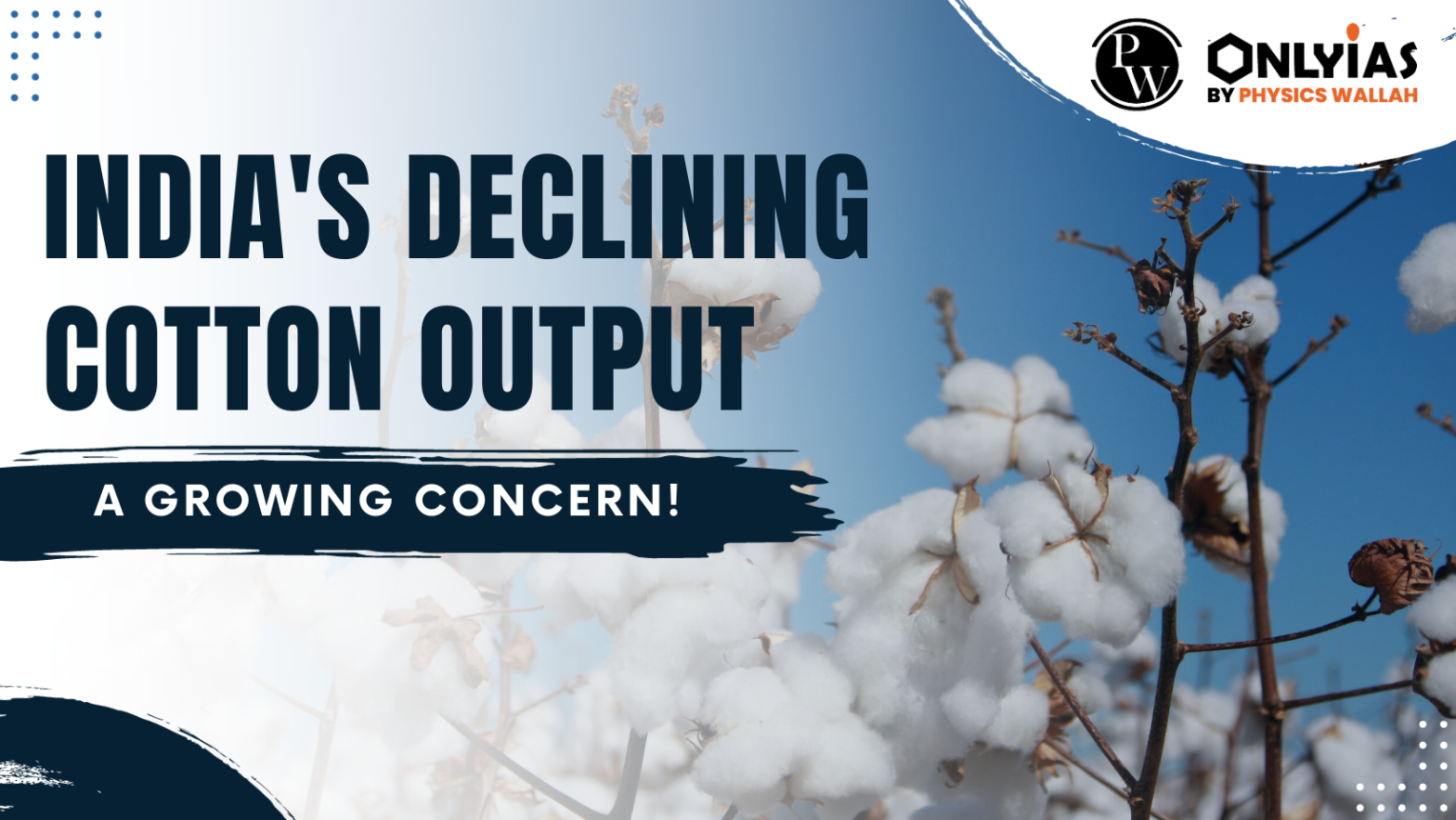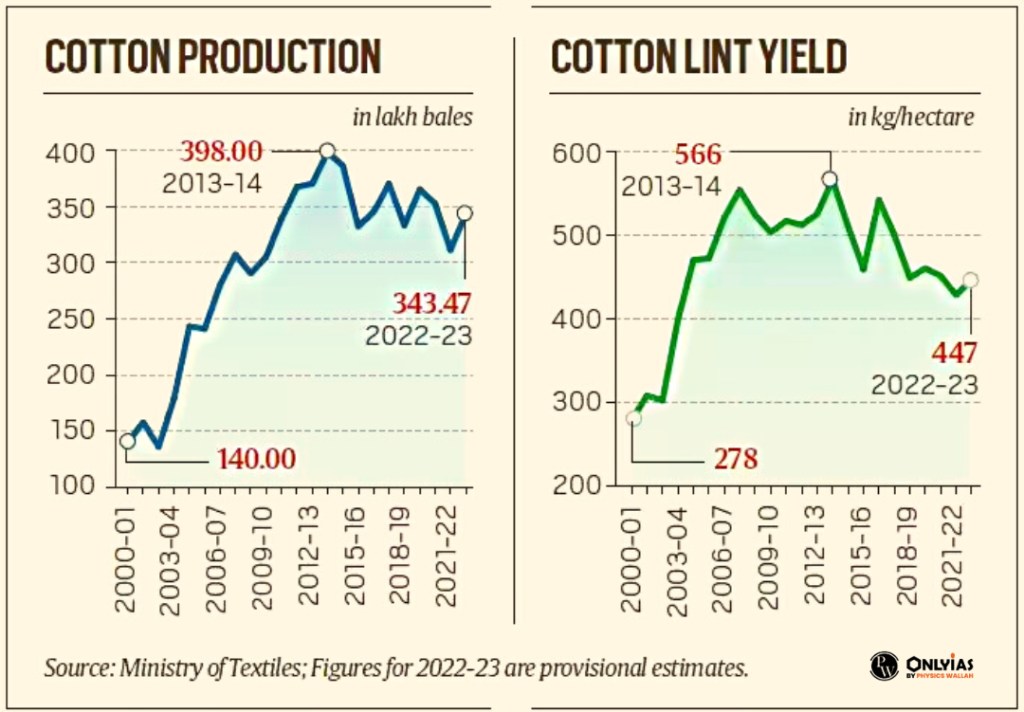
Context: This article is based on an Editorial “Why India’s cotton production decline is concerning” from the Indian Express. It explores pink bollworm damage to fiber plants and the promising technology-based mating disruption methods for pest control.
| Relevancy for Prelims: How Climate Change Affects cotton production, Adoption of High-Density Planting System, Role of Indian Patent Act, Protection of Plant Varieties and Farmers’ Rights Act.
Relevancy for Mains: Issues within the Cotton Sector industry, including Sustainability and Climate Resilience, and Assessing the Growth and Development Trajectory of the Industry |
|---|

| Attempt a Mains Question: Why do you think that India’s falling cotton production is a worry? What measures can be taken to resolve this issue? Discuss. (250 words, 15 Marks). |
|---|
To get PDF version, Please click on "Print PDF" button.
SC Verdict on Newsclick Shows Adherence to Due Pro...
Stay Invested: On Chabahar and India-Iran Relation...
Credit Rating Agencies, Impact on India’s De...
Catapulting Indian Biopharma Industry
Globalisation Under Threat, US Import Tariffs Have...
Global Report on Hypertension, Global Insights and...
<div class="new-fform">
</div>
